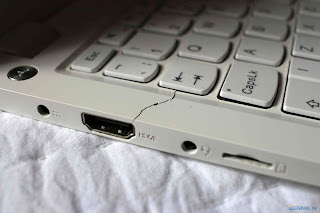The Following 3 Steps to Buy the Right Laptop for Students
Step 1: Evaluate your needs
If you only want one laptop to perform lightweight tasks - such as web
browsing, reading emails and checking social media - then you can choose
moderate specifications, which should also be moderately priced. Things that
use Intel Core i3 or i5 should be enough.
On the other hand, if you are looking for a machine that can handle
high-end computer games, virtual reality or video editing, you need to invest
in faster processors, better graphics capabilities and more RAM (system
memory). The 8th generation Intel Core i7, NVIDIA graphics card and 16GB or
32GB memory (not 8GB or 12GB) is a good idea.
On the storage side, more and more laptops use solid state drives (SSDs)
instead of hard
drives (HDDs), which makes these laptops thinner, lighter, faster,
and more energy efficient. Like flash memory in smartphones, SSDs are not
easily damaged because there are no moving parts.
In other words, I like to say that buying a laptop should be like buying
clothes: a little bigger than what you need now, so that you can use it for a
long time in the future.
Step 2: Choose an operating
system
When you buy a new laptop, you now have three main operating systems:
Windows, Mac, and Chromebook.
The operating system has its advantages, and my views on these three
aspects:
Windows 10 is the most popular choice today. It is provided by almost all
the largest computer brands - such as Dell, Hewlett-Packard, Asus, Lenovo,
Acer, etc. - In addition, Microsoft also produces its own Surface brand PC.
Windows 10 is versatile and easy to use, and works with most software and
hardware in any operating system. Windows 10 offers a variety of ways to
interact with content, whether it's a keyboard, trackpad or mouse; fingertips
on many touchscreens; use a stylus on the screen for greater precision (often
called "Digital Ink"); Or use the sound of the Cortana Personal
Assistant. There are also many options in terms of form factor. Windows devices
start at $199.
Apple's Mac series is also a popular choice - if you can afford it.
Because Apple is the only Mac-based product, such as the MacBook Air and
MacBook Pro, it has good quality control and is made of high-quality materials.
Macs tend to last a long time (but not their chargers), although the cost of
the Mac is higher compared to Windows and Chromebooks with comparable
specifications (MacBooks Air starts at $999, MacBook and MacBook Pro starts at
$1,299) . Some users find that they are easier to use than other operating
systems, although this can be attributed to personal preference. No touch
screen Mac - you have to buy an iPad tablet. Apple bundles many top apps for
free, which is great or can be downloaded for free from the Mac App Store.
Supported by Google's Chrome OS, Chromebooks are generally more
affordable than Windows and Mac, but there are also some advanced Chromebooks,
such as Google's own Pixelbook (starting at $999), which includes Google
Assistant for voice interaction, quality materials and Powerful specifications.
Chromebooks come with pre-installed popular Google apps like Gmail and Google
Maps. However, most Chromebooks have very modest specifications, such as very
little local storage, but most Google apps are cloud-based, so it may not
matter to you. Chrome OS is known as a streamlined, secure, and fast operating
system, primarily for basic tasks. Chromebooks start at $199.
Step 3: Determine the shape
If you focus on the notebook market, you will find that many are very
thin and light, which makes them easier to carry to coffee shops, offices,
schools, airplanes, etc.
Many Windows-based laptops are "two in one" because they can
be converted from laptops to tablets and then forwarded. Some two-in-ones are
called "convertibles" because they convert the laptop mode to a
tablet by simply bending the screen (on a 360-degree hinge) and disabling the
keyboard to support clicking and sliding the screen. The other two-in-one is
called “detachable”, because the screen is completely separated, you can carry
the tablet with you and put the keyboard on the desktop.
While laptops are usually preferred because they are portable, fixed
desktops may be better suited for younger children. If you put it in a busy
place at home, parents can keep an eye on where they are online. Desktops are
usually cheaper than laptops and are difficult to break due to poor mobility.
The external keyboard and mouse on the desktop can also be used more easily and
comfortably than the fixed notebook keyboard (and more
"ergonomic"), because you can adjust the angle to your liking.
Many of today's desktops are "all-in-ones", so when the
computer is installed on the back of a large display, there is no tower that
can take up extra space or a bunch of cables without worry. Ideal for anywhere
in your home - such as kitchen counters, home offices or teen rooms - many MFPs
come with a touch screen and are usually equipped with a wireless keyboard and
mouse.
But if you buy a desktop for a gamer, then the all-in-one is not
modular, because updating storage, memory or graphics is not easy. Instead,
tower settings may be the best choice for gamers.
As you can see, there are a lot of decisions that need to be made when
buying a new computer - this is not a universal solution - but as you spend,
you should decide on the operating system, form factor and minimum
specifications to meet your needs.
The above is the most basic aspect you need to know when purchasing a notebook. It can help
you determine the laptop you want to buy and try not to regret you buying a
wrong.


评论
发表评论